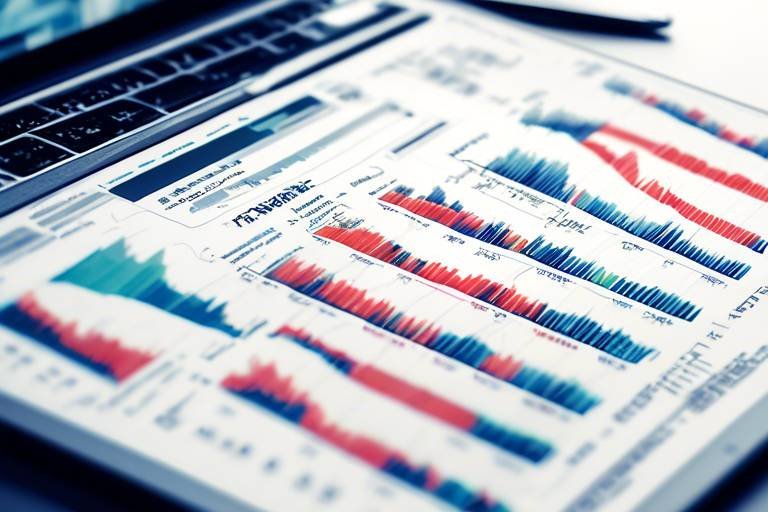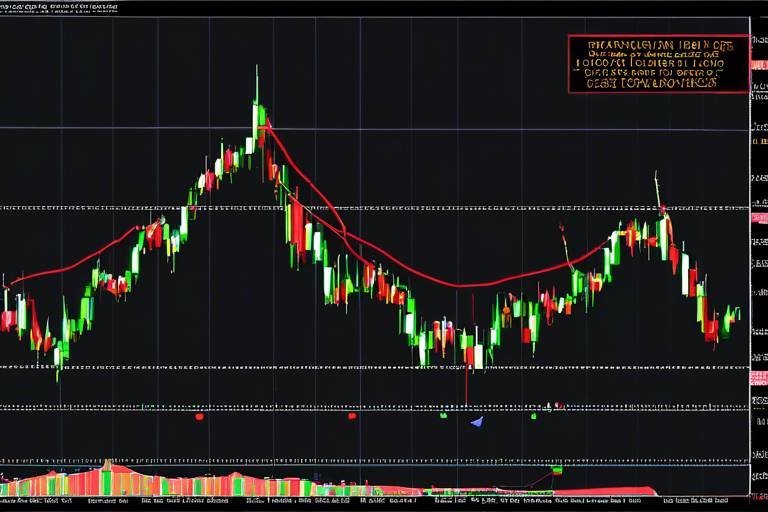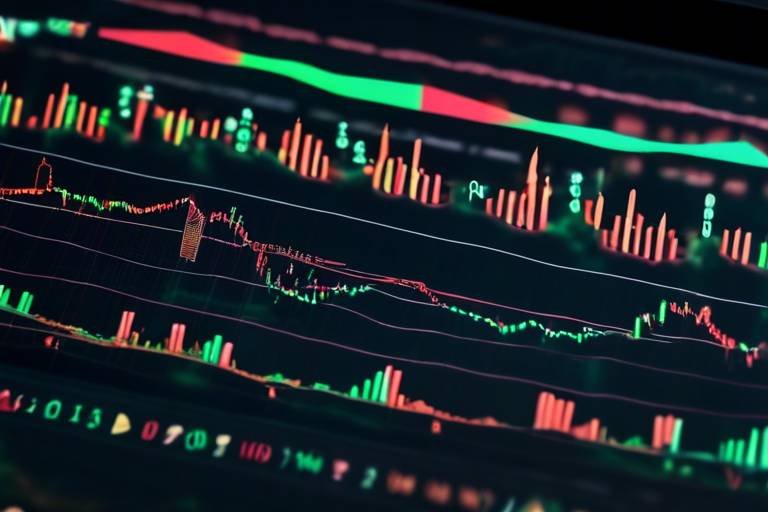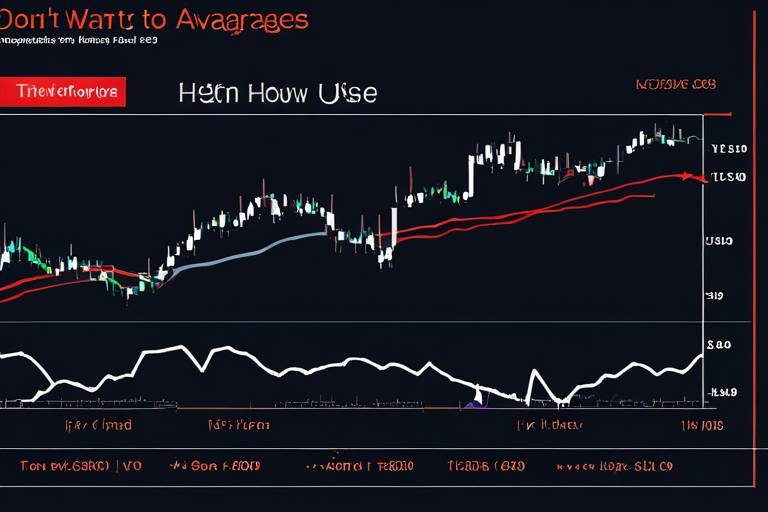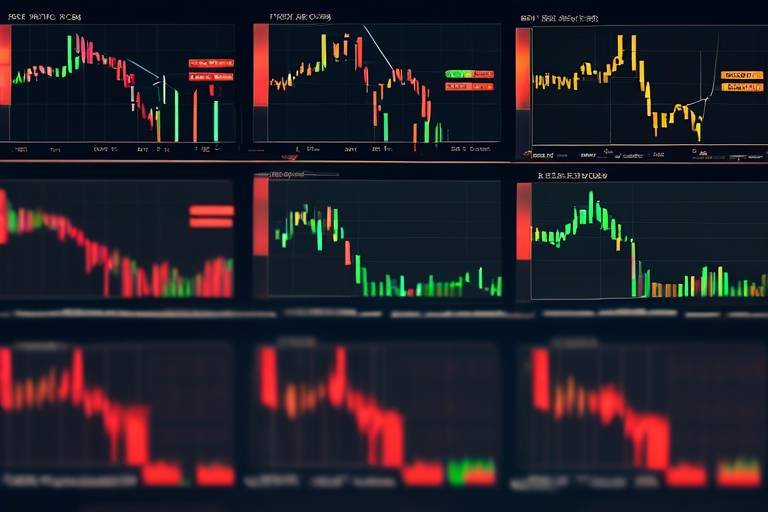How to Identify Market Manipulation Using Technical Analysis
In the fast-paced world of trading, understanding market manipulation is essential for anyone looking to protect their investments and make informed decisions. Market manipulation can be likened to a magician's trick—what appears to be a genuine price movement can often be a carefully orchestrated illusion. By employing technical analysis, traders can unveil these deceptive practices and navigate the market more effectively. This article will delve into various techniques and indicators that are instrumental in identifying potential market manipulation, empowering traders to act wisely and strategically.
Market manipulation refers to practices that distort the natural price movements of securities, resulting in unfair trading conditions. Think of it as someone pulling the strings behind the scenes, creating a false narrative about a stock's value. Recognizing these tactics is crucial for traders who want to safeguard their investments and maintain the integrity of the market. Whether it's through misleading information, pump-and-dump schemes, or wash trading, the impact of manipulation can be severe, leading to significant financial losses. By understanding the nuances of market manipulation, traders can better equip themselves to identify red flags and avoid falling victim to these unscrupulous practices.
When it comes to spotting market manipulation, technical indicators are your best friends. These indicators serve as the eyes and ears of traders, providing vital information about price movements and trading volumes. By analyzing these indicators, traders can pinpoint unusual price movements that may signal manipulation. Some essential indicators include moving averages, Relative Strength Index (RSI), and Bollinger Bands. Each of these tools offers unique insights into market behavior, helping traders make informed decisions. Let’s dive deeper into how these indicators can be utilized to detect potential manipulation.
Volume analysis is a critical aspect of technical analysis that helps traders gauge the strength of price movements. By examining volume spikes, traders can discern whether a price change is genuine or artificially engineered. For instance, if a stock's price surges but the accompanying volume is low, it could indicate that the movement is not sustainable and may be a result of manipulation.
Unusual volume patterns can serve as flashing warning signs of manipulation. When you notice a sudden increase in trading volume that deviates from the norm, it’s time to pay attention. These patterns can indicate that something unusual is happening beneath the surface. For example, if a stock typically trades 100,000 shares a day but suddenly spikes to 1 million shares, it could suggest that traders are reacting to news that may not be as beneficial as it seems. Understanding these patterns can provide insight into market sentiment and potential price movements.
Volume oscillators are another valuable tool that traders can use to measure momentum. These oscillators help identify shifts in market behavior that may indicate manipulation. By comparing current volume levels to historical averages, traders can detect divergences that may signal underlying issues. For instance, if prices are rising but volume is declining, it might suggest a lack of conviction in the price increase, hinting at possible manipulation.
Price action analysis focuses on the historical movements of a stock's price to predict future behavior. By interpreting price patterns, traders can identify signs of market manipulation. For example, a sudden spike followed by a rapid decline may indicate that the price was artificially inflated before a sell-off. Understanding the psychology behind these movements can provide traders with a significant edge in identifying potential manipulative tactics.
Certain chart patterns can be telltale signs of market manipulation. By monitoring these patterns, traders can gain insights into potential price distortions. Some key patterns to keep an eye on include:
The head and shoulders pattern is often a precursor to a trend reversal. When this pattern appears in unusual market conditions, it can be a signal that manipulation is at play. Traders should be cautious and look for confirmation before acting on this pattern, as it could indicate that the market is being influenced by external factors.
Flags and pennants are continuation patterns that can also indicate manipulation. These patterns typically occur after a strong price movement and can signal that the market is consolidating before making another move. However, if these patterns appear with unusual volume or in erratic market conditions, it’s essential to analyze the situation closely. Understanding the implications of these patterns can help traders develop effective trading strategies.
- What is market manipulation? Market manipulation involves practices that distort the natural price movements of securities, leading to unfair trading conditions.
- How can technical analysis help identify market manipulation? Technical analysis provides indicators and patterns that can reveal unusual price movements and trading volumes, helping traders spot potential manipulation.
- What are volume oscillators? Volume oscillators are tools used to measure momentum and identify shifts in market behavior that may indicate manipulation.
- Why are chart patterns important? Chart patterns can signal potential price distortions and help traders make informed decisions based on historical price movements.

Understanding Market Manipulation
Market manipulation is a term that often sends shivers down the spine of even the most seasoned traders. Why? Because it involves practices that can distort market prices and create an unfair playing field for everyone involved. Imagine you're at a carnival, and someone is rigging the games to ensure they always win. That's what market manipulation feels like in the financial world. It undermines trust and can lead to significant losses for unsuspecting investors.
To truly grasp the implications of market manipulation, it's essential to understand the tactics used by those who engage in it. These can range from pump and dump schemes to spoofing and churning. Each tactic has its own set of characteristics, but they all share a common goal: to mislead traders and distort the true value of assets. For instance, in a pump and dump scheme, manipulators will artificially inflate the price of a stock by spreading false information, only to sell off their holdings at the peak, leaving other investors holding the bag.
Recognizing these tactics is crucial for traders looking to protect their investments. Here are some common signs of market manipulation:
- Sudden price spikes: If a stock's price jumps dramatically without any news or reason, it could be a sign of manipulation.
- Unusual trading volume: A significant increase in trading volume that doesn't align with news or market trends can indicate manipulation.
- Price patterns that don't make sense: If price movements seem disconnected from market fundamentals, it might be worth investigating further.
Understanding these tactics can empower traders to make informed decisions and avoid falling victim to deceptive practices. Moreover, it fosters a sense of responsibility within the trading community to maintain market integrity. After all, a healthy market is one where all participants can trade confidently and fairly.
As we delve deeper into the world of technical analysis, you'll discover various tools and indicators that can help you identify potential market manipulation. By arming yourself with this knowledge, you can navigate the complexities of trading with greater assurance.

Key Technical Indicators
When it comes to identifying market manipulation, technical indicators are your best friends. Think of them as your trusty sidekicks in the chaotic world of trading, helping you sift through the noise and pinpoint what's really going on beneath the surface. But what exactly are these indicators, and how can they assist you in spotting potential market manipulation? Let’s dive into some of the most essential technical indicators that traders rely on.
One of the primary indicators you'll want to keep an eye on is volume. Volume is like the lifeblood of the market, indicating how much of a particular asset is being traded over a specific period. When you see a sudden spike in volume, it can be a red flag. Is that spike due to genuine interest in the asset, or is it a sign of manipulation? By analyzing volume trends, traders can determine whether price movements are backed by solid buying or selling pressure or if they are simply the result of a few players trying to sway the market.
Volume analysis is not just about looking at numbers; it's about understanding the story those numbers tell. For instance, a price increase accompanied by a significant volume spike often indicates strong buying interest. Conversely, if prices rise but volume remains stagnant, it could suggest that the price movement is not sustainable and may be artificially inflated. This discrepancy is crucial for traders who want to avoid falling into the traps set by manipulators.
Now, let’s talk about unusual volume patterns. These patterns can serve as telltale signs of potential manipulation. For example, if you notice a stock that typically trades 10,000 shares suddenly trading 100,000 shares in a single day, that’s something to investigate further. Such anomalies can signal that someone is trying to create a false impression of demand or supply. Recognizing these patterns can give you an edge in predicting future price movements.
Another powerful tool in your arsenal is the volume oscillator. This indicator measures the momentum of volume changes and can help you identify shifts in market behavior. For example, if the volume oscillator turns positive while prices are declining, it could indicate that a reversal is on the horizon. This is where you can spot potential manipulation, as it often precedes significant price shifts. By utilizing volume oscillators, you can better gauge the strength of price movements and make more informed trading decisions.
In summary, understanding and analyzing volume is crucial for detecting market manipulation. By keeping an eye on volume trends, unusual patterns, and using tools like volume oscillators, you can gain valuable insights into the market's true dynamics. Remember, the more informed you are about these key technical indicators, the better equipped you'll be to navigate the often murky waters of trading.
- What is market manipulation? Market manipulation refers to practices that distort market prices, often leading to unfair trading conditions.
- How can I identify market manipulation? By using technical analysis tools such as volume analysis and price action analysis, traders can spot unusual patterns that may indicate manipulation.
- What role do technical indicators play? Technical indicators help traders assess market conditions and make informed decisions by providing insights into price movements and trading volumes.
- Why is volume important in trading? Volume indicates the strength of price movements and can signal whether those movements are genuine or the result of manipulation.

Volume Analysis
When it comes to trading, understanding is like having a secret weapon in your arsenal. It’s not just about the price; it’s about how many shares or contracts are changing hands. Think of volume as the fuel that drives the market engine. High volume can indicate strong interest in a particular asset, while low volume might suggest a lack of conviction. This is where traders can start to sniff out potential market manipulation. By analyzing volume, you can discern whether price movements are genuine or if they’re just smoke and mirrors.
Imagine you’re at a concert. If everyone is dancing and singing along, the energy is palpable. That’s akin to high trading volume—everyone is engaged, and the market is moving in a clear direction. On the flip side, if only a handful of people are bobbing their heads, you might question the authenticity of the performance. Similarly, a price movement backed by high volume suggests that there’s a solid consensus among traders, while a price change with low volume might raise red flags.
To effectively utilize volume analysis, traders often look for volume spikes. These spikes can signal unusual activity that may indicate manipulation. For example, if a stock typically trades 10,000 shares a day but suddenly sees a spike to 100,000 shares, it’s worth taking a closer look. Is there news driving this interest, or is someone trying to create a false sense of demand? By paying attention to these anomalies, traders can make more informed decisions.
Another critical aspect of volume analysis is the concept of volume trends. It’s important to not just look at one-off spikes but to observe how volume behaves over time. Are there consistent patterns? For instance, if you notice that every time a stock reaches a certain price, volume surges, it could indicate a psychological barrier for traders. This is where a simple
| Date | Price | Volume |
|---|---|---|
| 01/01 | $10 | 15,000 |
| 01/02 | $11 | 20,000 |
| 01/03 | $10.50 | 50,000 |
In this example, you can see how the volume increased significantly on January 3rd, even as the price dipped slightly. This could suggest that traders are accumulating shares at a lower price, or it could be an indication of manipulation trying to create a false narrative around the asset.
In summary, volume analysis is a critical component of identifying market manipulation. By observing volume spikes and trends, traders can gain insights into market sentiment and potential price movements. It’s all about reading the signals correctly and not getting caught up in the noise. Always remember, in the world of trading, knowledge is power, and understanding volume can give you the edge you need to succeed.

Unusual Volume Patterns
When it comes to identifying market manipulation, can serve as a red flag for traders. These patterns often indicate that something significant is happening beneath the surface, which might not be immediately apparent through price movements alone. For instance, if you notice a sudden spike in trading volume without a corresponding change in price, it could suggest that a group of traders is attempting to manipulate the market. Think of trading volume as the heartbeat of the market; when it spikes unexpectedly, it’s like a warning sign that something is off.
Traders should be on the lookout for specific types of unusual volume patterns, such as:
- Volume Spikes: A sudden increase in volume can indicate that market participants are reacting to news or events, but it can also signal manipulation, especially if the price remains stable.
- Volume Dry-ups: Conversely, a sharp decrease in volume during a significant price movement can suggest that the movement is not supported by genuine interest, hinting at possible manipulation.
- Volume Divergence: This occurs when price trends upward while volume trends downward (or vice versa). Such discrepancies often indicate that the current price movement may not be sustainable, raising the possibility of manipulation.
Understanding these patterns can greatly enhance a trader's ability to make informed decisions. For example, if you see a stock price surging but the volume is unusually low, it might be wise to approach the situation with caution. The lack of supporting volume could indicate that the price increase is not backed by genuine buying interest, which is a common tactic in market manipulation.
Additionally, it's crucial to combine volume analysis with other technical indicators to get a clearer picture. For instance, using moving averages alongside volume analysis can help confirm whether a price movement is genuine or manipulated. If the price breaks through a moving average with high volume, it could suggest a strong trend, whereas a similar break with low volume might indicate a lack of conviction among traders.
To sum up, unusual volume patterns are essential in identifying potential market manipulation. By paying close attention to these patterns, traders can better protect their investments and navigate the complexities of the market. Just like a detective piecing together clues, you can use volume analysis to uncover the truth behind price movements and make more informed trading decisions.
Q: What are the most common signs of market manipulation?
A: Common signs include sudden price spikes without news, unusual volume patterns, and price movements that diverge from overall market trends.
Q: How can I protect myself from market manipulation?
A: Stay informed about market news, use technical analysis tools, and always consider the volume behind price movements before making trading decisions.
Q: Are there specific indicators that can help identify manipulation?
A: Yes, indicators like volume oscillators, moving averages, and relative strength index (RSI) can help traders spot potential manipulation.

Volume Oscillators
When it comes to identifying market manipulation, are indispensable tools for traders. These oscillators provide crucial insights into market momentum, helping investors gauge whether price movements are genuine or the result of manipulative tactics. By analyzing the relationship between price and volume, traders can uncover hidden trends and shifts in market behavior.
So, what exactly are volume oscillators? In simple terms, they are technical indicators that measure the difference between two volume averages over a specific period. This measurement helps traders determine whether buying or selling pressure is increasing or decreasing. A significant change in these oscillators can indicate that something unusual is happening in the market, potentially signaling manipulation.
For instance, consider using the Accumulation/Distribution Line (A/D Line) as a volume oscillator. This indicator helps traders understand whether money is flowing into or out of a security. If the price is rising but the A/D Line is falling, it might suggest that the price increase is not supported by genuine buying interest, which could be a red flag for manipulation.
Another popular volume oscillator is the Chaikin Money Flow (CMF). This tool combines price and volume to determine the buying and selling pressure over a specified period. A positive CMF indicates that buyers are in control, while a negative CMF suggests that sellers dominate. Traders should pay close attention to sudden changes in CMF, as these could hint at potential market manipulation.
Here's a quick comparison of some common volume oscillators:
| Volume Oscillator | Purpose | Key Insights |
|---|---|---|
| Accumulation/Distribution Line | Measures money flow in/out of a security | Identifies divergence between price and volume |
| Chaikin Money Flow | Combines price and volume to assess pressure | Signals potential buying/selling dominance |
| On-Balance Volume (OBV) | Tracks cumulative volume to predict price movements | Highlights trends based on volume changes |
Using these oscillators effectively requires a keen eye for detail. Traders should look for divergences between the oscillator and the price action. For example, if prices are reaching new highs while the volume oscillator is failing to reach similar highs, this discrepancy could indicate a lack of genuine buying interest, pointing towards potential manipulation.
In conclusion, volume oscillators are powerful allies in the fight against market manipulation. By incorporating them into your trading strategy, you can gain valuable insights into market dynamics and make more informed decisions. Remember, the key is to look beyond the surface and analyze the underlying volume trends. This approach not only enhances your trading skills but also helps protect your investments in an often unpredictable market.

Price Action Analysis
Price action analysis is a powerful tool in the arsenal of traders, focusing on the historical price movements of a security rather than relying on indicators or external factors. By examining price movements, traders can glean insights into market sentiment and potential manipulation. Imagine you're a detective, sifting through clues left behind by the market; each price movement is a hint that could lead you to uncover the truth about what’s happening beneath the surface.
One of the key aspects of price action analysis is understanding how to interpret various price patterns that emerge over time. These patterns can reveal the underlying motivations of traders and highlight potential manipulation. For instance, when a stock experiences a rapid increase in price followed by a sudden drop, it could indicate that someone is attempting to create a false sense of demand or supply. This is where your detective skills come into play—by recognizing these patterns, you can make more informed trading decisions.
When analyzing price action, traders often look for specific formations that suggest manipulation. Some of these formations include:
- Pin Bars: These candlestick patterns indicate potential reversals and can signify that the market is being manipulated.
- Engulfing Patterns: An engulfing pattern occurs when a smaller candle is completely engulfed by a larger one, often signaling a shift in market sentiment that could be the result of manipulation.
- Doji Candles: A doji candle indicates indecision in the market, which can sometimes be a sign of manipulation as traders struggle to determine the direction of price movement.
Moreover, the context in which these patterns occur is crucial. For example, if you spot a head and shoulders pattern forming but notice an unusual spike in volume, it could be a red flag indicating that someone is trying to manipulate the market. Conversely, if the price action aligns with broader market trends and is supported by consistent volume, it’s likely a genuine movement.
Another essential element of price action analysis is the use of support and resistance levels. These levels act as psychological barriers for traders. When prices approach these levels, the market often reacts predictably, which can be exploited by manipulators. For instance, if a stock consistently bounces off a resistance level, a trader might try to push the price above that resistance to trigger a buying frenzy, only to sell off at a profit once the price rises. Understanding these dynamics can help traders anticipate potential manipulation and protect their investments.
In summary, price action analysis is not just about observing price movements; it’s about interpreting the story those movements tell. By honing your skills in this area, you can become more adept at spotting signs of manipulation and making strategic trading decisions. Remember, the market is like a living organism, constantly evolving and reacting to the actions of its participants. By staying vigilant and informed, you can navigate through the complexities of market manipulation with greater confidence.
- What is price action analysis?
Price action analysis involves studying historical price movements to make trading decisions, focusing on patterns and trends rather than relying solely on indicators. - How can I identify market manipulation through price action?
Look for unusual price patterns, spikes in volume, and context around support and resistance levels to spot potential manipulation. - Are there specific patterns to watch for?
Yes, patterns such as pin bars, engulfing patterns, and doji candles can indicate potential market manipulation.

Chart Patterns to Watch
When it comes to identifying market manipulation, being aware of specific chart patterns can be a game changer. Chart patterns are visual representations of price movements that can reveal underlying market sentiment and potential future price actions. As traders, we must keep our eyes peeled for these patterns, as they often serve as red flags indicating that something is amiss in the market. Understanding these patterns not only helps in spotting manipulation but also in making informed trading decisions.
One of the most notorious patterns that traders should be on the lookout for is the head and shoulders pattern. This formation typically signifies a trend reversal, making it a critical indicator of potential market manipulation. When you see this pattern forming, especially in an otherwise stable market, it's a signal to dig deeper. Is the volume supporting this move? Are there external news factors that could be influencing the price? These questions can guide your analysis and help you avoid falling into a trap set by manipulators.
Another pattern that deserves attention is the flags and pennants. These are continuation patterns that can sometimes mask manipulation. Flags appear as small rectangles that slope against the prevailing trend, while pennants look like small triangles that form after a strong price movement. Both patterns can indicate a pause before the trend resumes, but they can also be manipulated by traders looking to create false signals. It’s essential to analyze the volume accompanying these patterns; if the volume spikes during the formation, it might suggest that manipulation is at play.
To help you better understand these patterns, here’s a quick comparison table:
| Pattern | Description | Indication of Manipulation |
|---|---|---|
| Head and Shoulders | A reversal pattern with three peaks, the middle being the highest. | Can indicate a shift in market sentiment, often manipulated during high volatility. |
| Flags | Rectangular shape that slopes against the prevailing trend. | May signal a temporary pause, but sudden volume changes can indicate manipulation. |
| Pennants | Small symmetrical triangles that form after a strong price movement. | Can suggest continuation, but watch for unusual volume spikes that may signal manipulation. |
In conclusion, recognizing these chart patterns and understanding their implications is crucial for any trader looking to navigate the murky waters of market manipulation. Always remember that while patterns can provide valuable insights, they should be used in conjunction with other indicators and analysis techniques. The more tools you have in your trading arsenal, the better prepared you will be to identify and react to potential manipulation.
- What is market manipulation? Market manipulation involves practices that distort market prices, leading to unfair trading conditions.
- How can I identify market manipulation? By using technical analysis tools, including volume analysis and chart patterns, traders can spot unusual price movements.
- What are the key indicators for spotting manipulation? Volume analysis and price action analysis are essential indicators to watch for potential manipulation.
- Are chart patterns reliable for predicting market manipulation? While they can provide insights, it’s crucial to use them alongside other indicators for a more comprehensive analysis.

Head and Shoulders
The head and shoulders pattern is one of the most recognized formations in technical analysis, often serving as a reliable indicator of trend reversals. Imagine a mountain range where the peaks represent price highs. In this context, the "head" is the highest peak, flanked by two lower peaks known as the "shoulders." This formation typically signals that a bullish trend is about to reverse into a bearish trend, making it essential for traders to watch closely.
To identify this pattern, traders should look for three key components:
- Left Shoulder: This forms when the price rises to a peak and then declines.
- Head: The price then increases again, surpassing the previous peak, before falling once more.
- Right Shoulder: Finally, the price rises again but does not exceed the head's peak, leading to a decline.
Here's a simple visual breakdown of the head and shoulders pattern:
| Component | Description |
|---|---|
| Left Shoulder | Initial peak followed by a price drop. |
| Head | Higher peak followed by another drop. |
| Right Shoulder | Final peak that is lower than the head, followed by a drop. |
Recognizing the head and shoulders pattern is crucial for traders, as it often precedes significant price movements. When this pattern appears, it can indicate that the buying pressure is weakening, and sellers are gaining control. Traders typically look for confirmation through a break below the neckline, which is the horizontal line drawn across the lows of the two shoulders. This break can serve as a trigger for entering a short position.
However, it's important to note that not all head and shoulders patterns lead to successful trend reversals. Market conditions can vary, and false breakouts can occur. Thus, traders should combine this pattern with other technical indicators, such as volume analysis or momentum oscillators, to strengthen their decision-making process.
In summary, the head and shoulders pattern is a powerful tool in a trader's arsenal, providing valuable insights into potential market manipulation and price reversals. By understanding its structure and implications, traders can better navigate the complexities of the market and make more informed decisions.
Q: How reliable is the head and shoulders pattern?
A: While the head and shoulders pattern is considered a strong indicator of trend reversals, its reliability can vary based on market conditions. It's best used in conjunction with other technical analysis tools for confirmation.
Q: Can the head and shoulders pattern occur in a downtrend?
A: Yes, there is an inverse head and shoulders pattern that can occur in a downtrend, signaling a potential bullish reversal.
Q: What should I do if I identify a head and shoulders pattern?
A: If you identify this pattern, consider waiting for a confirmed break below the neckline before entering a trade. Additionally, monitoring volume and other indicators can provide further confirmation of the trend reversal.

Flags and Pennants
When it comes to identifying market manipulation, flags and pennants are two of the most critical chart patterns that traders should keep an eye on. These patterns are not just pretty shapes on a chart; they are visual representations of market sentiment and can often indicate potential price distortions. Think of flags and pennants as the warning signs on the road of trading—if you know what to look for, you can navigate through the unpredictable twists and turns of the market with greater confidence.
Flags typically appear after a strong price movement, either upward or downward, and they represent a brief consolidation period before the price continues in the same direction. They resemble a rectangle that slopes against the prevailing trend, and spotting them can be a game-changer. For instance, if you notice a flag pattern forming after a significant price increase, it could suggest that the market is taking a breather before pushing even higher. However, if the volume during this consolidation phase is unusually low, it might indicate that the price action is being manipulated by a few large players who want to create a false sense of security.
Pennants, on the other hand, are generally formed after a sharp price movement and look like small symmetrical triangles. Unlike flags, which are more rectangular, pennants show a convergence of price action, indicating that the market is getting ready for a breakout—either up or down. The key here is to watch the volume closely. A significant spike in volume during the breakout can confirm the strength of the move, while a low volume breakout might raise red flags about market manipulation. It’s like waiting for the starter pistol at a race; if the crowd is silent, you have to wonder if the race is even happening.
To effectively utilize flags and pennants in your trading strategy, consider the following tips:
- Confirm with Volume: Always check the volume associated with the formation of these patterns. A strong volume breakout is often a sign of genuine market movement, while low volume can indicate manipulation.
- Look for Context: Analyze the broader market context. Are there news events or economic indicators that could affect price movements? Understanding the bigger picture can help you gauge whether a pattern is likely to be manipulated.
- Set Clear Entry and Exit Points: Define your trading strategy ahead of time. Knowing when to enter and exit can help you capitalize on genuine movements while protecting yourself from potential traps.
In conclusion, recognizing flags and pennants is crucial for traders who wish to navigate the often tumultuous waters of the market. By paying close attention to these patterns and the accompanying volume, you can better identify when market manipulation might be at play. Remember, the goal is not just to spot these patterns but to understand what they signify in the context of market behavior. So, the next time you see a flag or a pennant forming on your charts, take a moment to analyze what it could mean for your trading strategy.
What are flags and pennants in trading?
Flags and pennants are technical chart patterns that indicate potential price movements. Flags are rectangular shapes that slope against the prevailing trend, while pennants are small symmetrical triangles that form after a sharp price movement.
How can I identify market manipulation using these patterns?
By analyzing the volume associated with flag and pennant formations, traders can determine whether a price movement is genuine or influenced by a small number of traders. A significant volume increase during a breakout is a positive sign, while low volume could indicate manipulation.
Can I trade flags and pennants?
Yes, many traders use flags and pennants as part of their trading strategies. It’s essential to set clear entry and exit points and to consider the overall market context before making trading decisions.
Frequently Asked Questions
- What is market manipulation?
Market manipulation refers to practices that distort the true market price of a security, often leading to unfair trading conditions. It's like a magician pulling a rabbit out of a hat—what you see isn't always what you get!
- How can technical analysis help identify market manipulation?
Technical analysis uses various indicators and patterns to spot unusual price movements and trading volumes. By analyzing these elements, traders can better understand whether price changes are genuine or the result of manipulation.
- What are volume spikes, and why are they important?
Volume spikes occur when there is a sudden increase in trading activity for a particular security. They are crucial because they can indicate potential manipulation—if you see a price move accompanied by an unusual volume, it’s time to dig deeper!
- What should I look for in unusual volume patterns?
Unusual volume patterns can signal manipulation. Look for sudden increases in volume that don't correlate with price changes or news events. If something feels off, it probably is!
- How do volume oscillators work?
Volume oscillators measure the momentum of trading volume. They help traders detect shifts in market behavior that may indicate manipulation. Think of them as a compass guiding you through the treacherous waters of market trends.
- What is price action analysis?
Price action analysis focuses on historical price movements to interpret market behavior. By studying past price patterns, traders can identify signs of manipulation and make informed trading decisions.
- What chart patterns should I watch for manipulation?
Certain patterns like head and shoulders, flags, and pennants can indicate manipulation. Monitoring these patterns can help traders anticipate potential price distortions and adjust their strategies accordingly.
- How does the head and shoulders pattern indicate manipulation?
The head and shoulders pattern often signals a trend reversal. If you notice this pattern in unusual market conditions, it could be a red flag for potential manipulation, like a wolf in sheep's clothing!
- What are flags and pennants in trading?
Flags and pennants are continuation patterns that can suggest manipulation. They're like road signs indicating the market's next move, helping traders navigate through potential traps set by manipulators.








